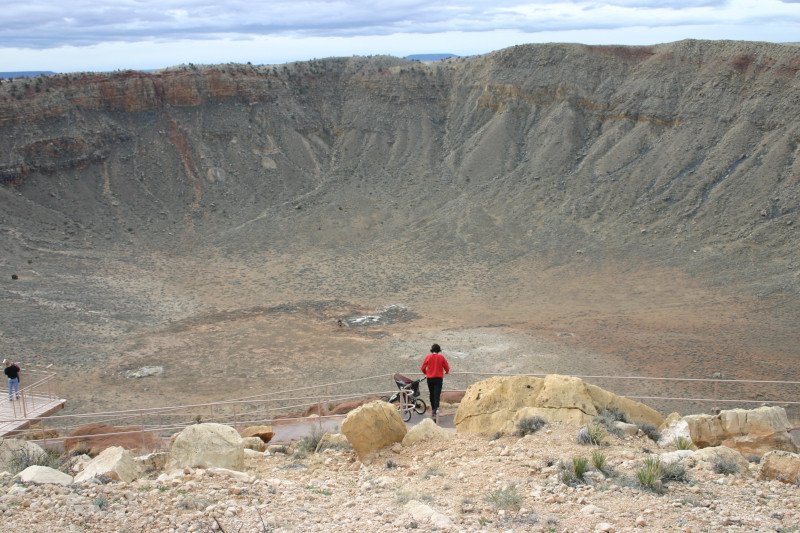
The Arizona Meteor Crater represents an impact crater created by a large meteor strike ages ago. It remains considered by many to be the best-preserved meteor crater known to man.
It sits roughly 37 mi (60 km) east of Flagstaff, Arizona, situated in the desert regions of the state of Arizona, United States, in North America. Many also commonly refer to the Arizona Meteor Crater simply as Meteor Crater.
The location once bore the name of the Canyon Diablo Crater. For that reason, fragments of the meteorite still officially remain attributed to the Canyon Diablo Meteorite. The land that this marvel of geology sits on now belongs to private individuals.
Arizona Meteor Crater Physical Characteristics
The Arizona Meteor Crater occurs at an elevation of about 5,710 ft (1,740 m) above sea level. It has a diameter of roughly 3,900 ft (1,200 m), and its maximum depth is nearly 570 ft (170 m).
Surrounding the crater remains a large rim that formed due to ejecta created at the moment of the meteor’s impact. This rim rises an average of 148 ft (45 m) above the relatively flat plain surrounding it.
The center of the Arizona Meteor Crater also contains a thick layer of rubble sitting atop the bedrock. This rubble comprises a combination of fragmented portions of the meteorite and the native rock strata. This rubble is also nearly 790 ft (240 m) in depth.
Arizona Meteor Crater Formation and Preservation
The Arizona Meteor Crater formed around 50,000 years ago. At that time, the local climate stayed much damper and cooler.
The meteorite that created the crater constituted a type known as a nickel-iron meteorite. Estimates place its size at the time of impact at about 160 ft (50 m) in diameter. The latest estimates also place its speed at impact at 28,600 mph (45,760 kph).
The majority of the object itself vaporized instantly upon impact. The energy released by the impact roughly measured the equivalent of a 10 megaton nuclear blast. Since the site resides on private land, it cannot be designated as a National Monument. Instead, it now holds the designation of a National Natural Landmark.
Related Articles: Gibraltar Rock, Devils Tower, Eye of the Sahara

